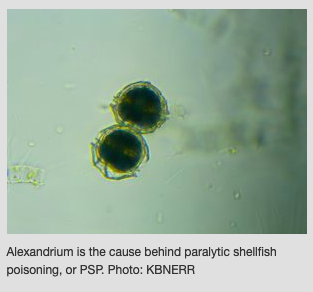Paralytic Shellfish Poisoning (PSP) is an emerging health threat in the Bering Straits, and a big part of the research on the Norseman II. I think that it is safe to say that it will come up a lot in this blog, so I want to take some time to share some information about it.
What is Paralytic Shellfish Poisoning?
Imagine you are a doctor. A patient comes into your emergency room. Their lips, tongue, fingers, and toes are tingling. They are unable to control their arms or legs, and are having trouble talking. After asking a few questions from the relative that brought them here, you learn that they ate clams from a nearby beach.
The patient is quickly getting worse. The muscles in their chest are becoming paralyzed and it is harder and harder for them to breath. Soon, they cannot breathe on their own and you have to connect them to a mechanical respirator.
After a few days, the patient is doing better and can breathe on their own once more. What just happened? Luckily, the fact that they ate clams provides a clue. Your patient just survived paralytic shellfish poisoning (PSP).
How you get it
PSP is caused by eating clams, mussels, and other shellfish that have been contaminated with algae containing paralytic shellfish toxin. Clams are filter feeders who eat plankton out of the water. Most of the plankton that they eat are harmless to people, but some species, such as Alexandrium, produce toxins that are harmful to humans and other wildlife. If the clams eat a lot of the harmful species, the toxins build up in their meat. If a human (or an animal like a walrus or a seabird) eats the clams, they can become poisoned.

How is it treated
There is no cure for PSP. Luckily, given a few days, the toxin will pass out of your body. Unfortunately, during that time, your muscles can be paralyzed. In severe cases, you can’t breathe. The only way to survive is to be connected to a mechanical respirator, a machine that breathes for you.
New in the Alaskan Arctic
PSP is caused by blooms of specific plankton, such as Alexandrium. In the past, polar waters were too cold for Alexandrium to survive. Now, climate change is warming the Alaskan Arctic region. In 2017, scientists found paralytic shellfish toxin in four walruses near Shishmaref and Diomede. In 2019, scientists found dangerous amounts of paralytic shellfish toxin in clams in the Chukchi Sea.


Comments